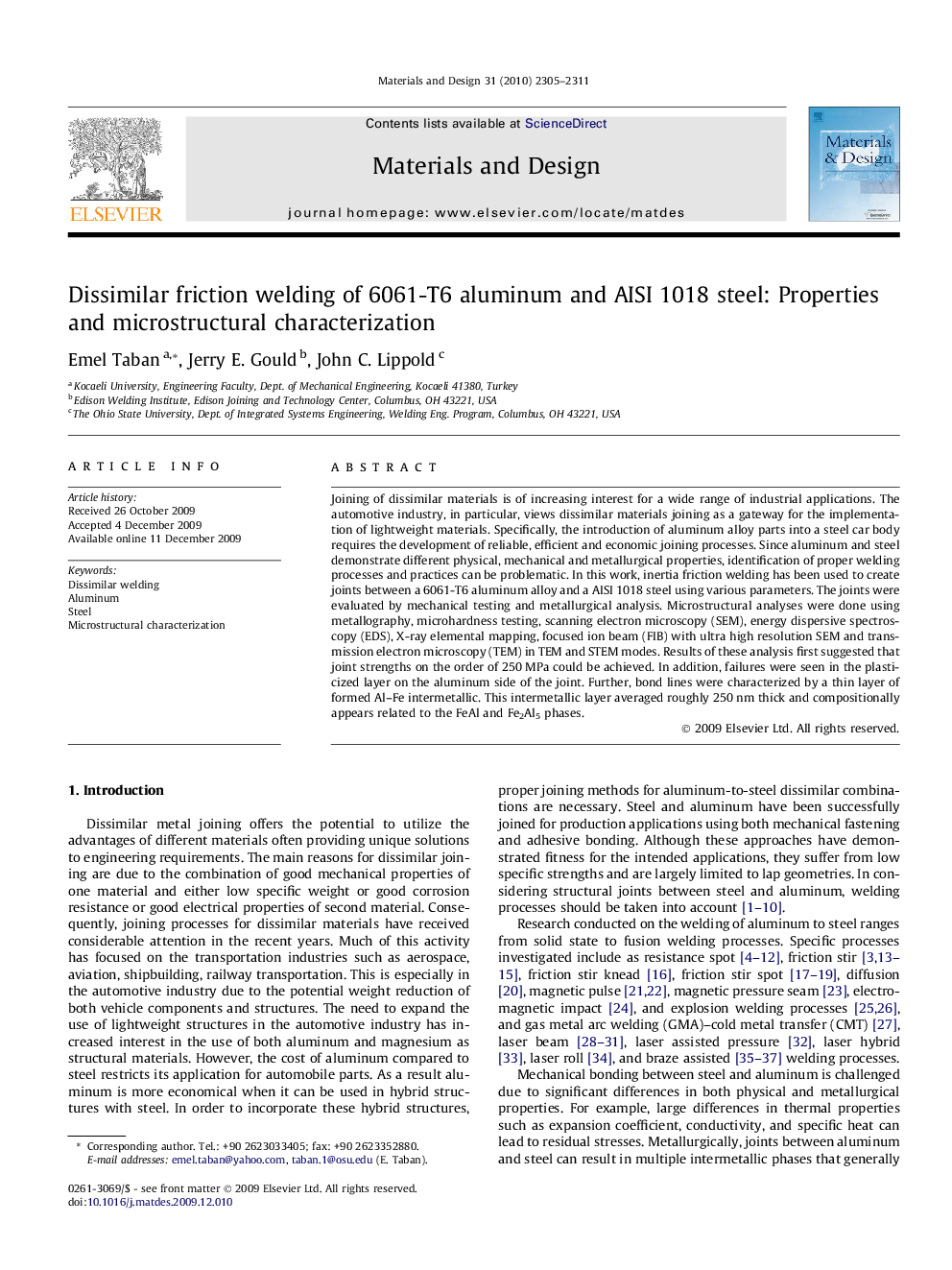| Article ID | Journal | Published Year | Pages | File Type |
|---|---|---|---|---|
| 832050 | Materials & Design (1980-2015) | 2010 | 7 Pages |
Joining of dissimilar materials is of increasing interest for a wide range of industrial applications. The automotive industry, in particular, views dissimilar materials joining as a gateway for the implementation of lightweight materials. Specifically, the introduction of aluminum alloy parts into a steel car body requires the development of reliable, efficient and economic joining processes. Since aluminum and steel demonstrate different physical, mechanical and metallurgical properties, identification of proper welding processes and practices can be problematic. In this work, inertia friction welding has been used to create joints between a 6061-T6 aluminum alloy and a AISI 1018 steel using various parameters. The joints were evaluated by mechanical testing and metallurgical analysis. Microstructural analyses were done using metallography, microhardness testing, scanning electron microscopy (SEM), energy dispersive spectroscopy (EDS), X-ray elemental mapping, focused ion beam (FIB) with ultra high resolution SEM and transmission electron microscopy (TEM) in TEM and STEM modes. Results of these analysis first suggested that joint strengths on the order of 250 MPa could be achieved. In addition, failures were seen in the plasticized layer on the aluminum side of the joint. Further, bond lines were characterized by a thin layer of formed Al–Fe intermetallic. This intermetallic layer averaged roughly 250 nm thick and compositionally appears related to the FeAl and Fe2Al5 phases.
